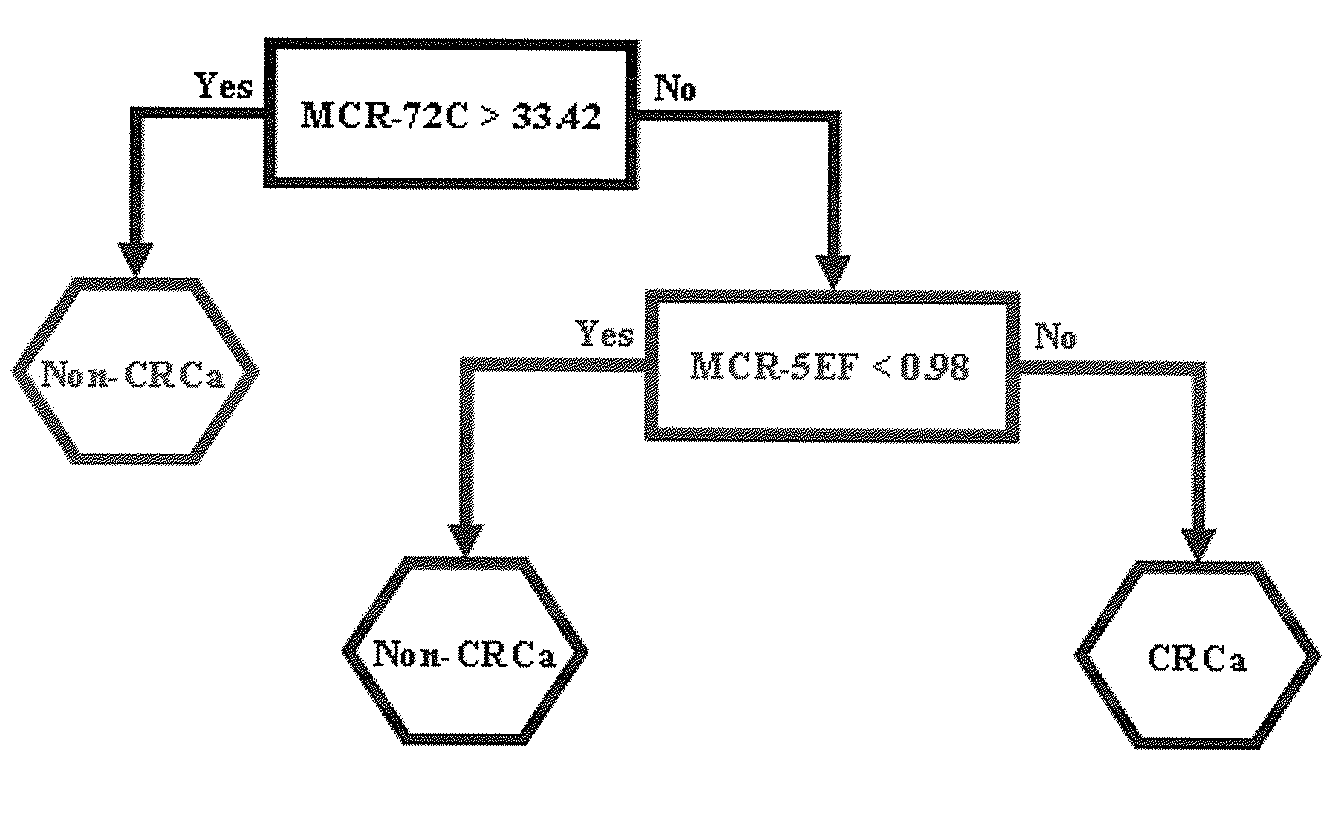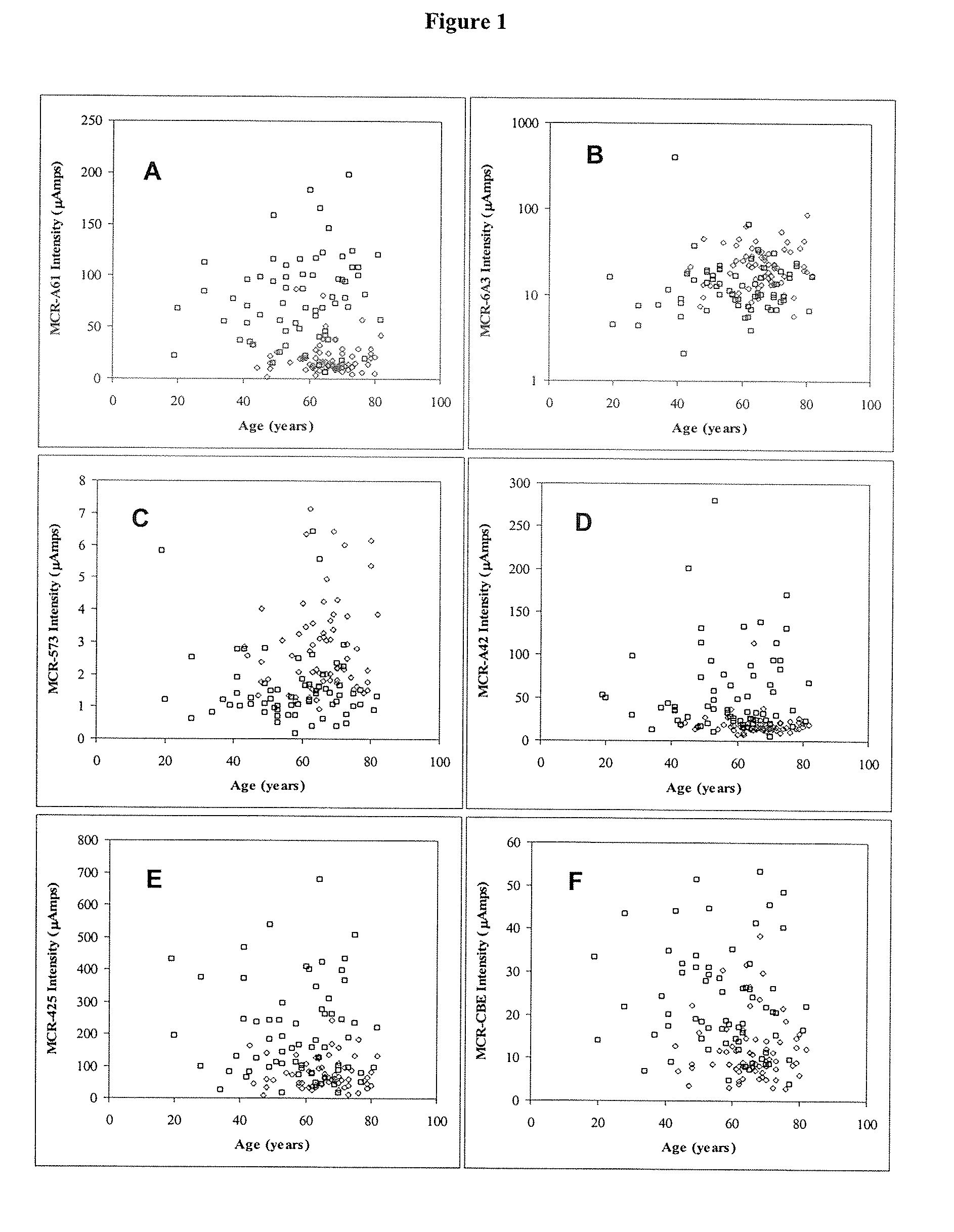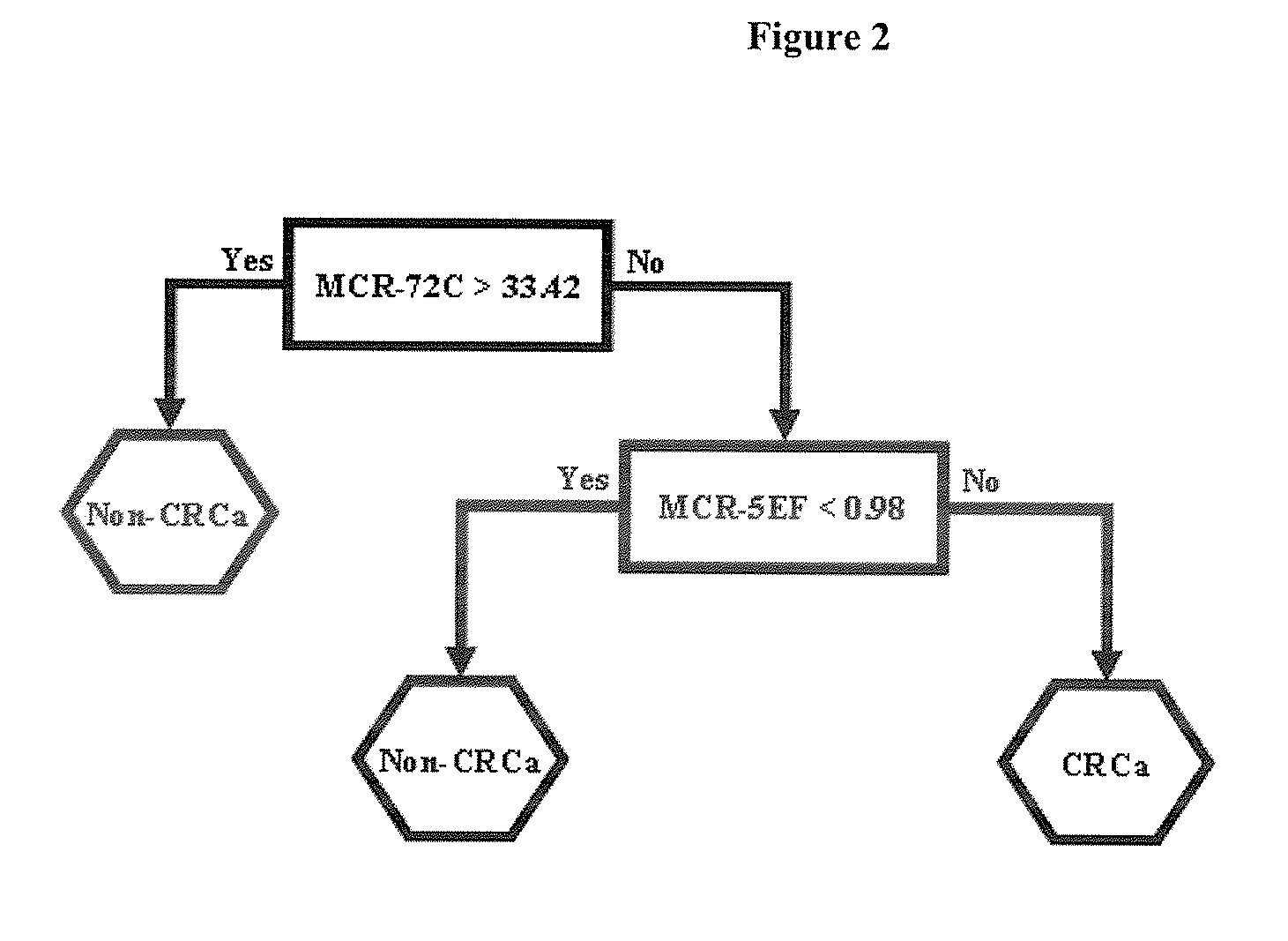Biomarkers for use in the diagnosis and treatment of colorectal cancer
a colorectal cancer and biomarker technology, applied in the field of large intestinal diseases, can solve the problems of increasing the risk of developing early adenomas with low-grade dysplasia, low diagnostic yield compared to other methods, and limited reliable detection methods, especially for early detection of the diseas
- Summary
- Abstract
- Description
- Claims
- Application Information
AI Technical Summary
Benefits of technology
Problems solved by technology
Method used
Image
Examples
example 1
Detection of Serum Biomarkers
[0250]A total of 136 serum samples were collected from patients recruited through the Departments of Gastroenterology and Surgery of the Universities of Erlangen and Magdeburg (both in Germany), and maintained by the European Tumor Sample Institute gGmbH (Hennigsdorf, Germany).
Sample groups include colorectal cancer (68 patients), benign (45 patients) and controls (23 patients) (Table 1).
[0251]
TABLE 1Summary of the distribution of samples for the discovery ofbiomarkers for colorectal cancer.GenderMaleFemaleSiteEMDTotalEMDTotalCRCa5313632932Benign0181802727Healthy09901414CRCa: Colorectal CancerMD: Magdeburg.E: Erlangen.
[0252]To determine if there was a significant bias between patient genders or patient ages in different sample groups (CRCa vs. benign disease vs. control; or CRCa vs. non-CRCa), χ2 contingency table analyses was performed. Patient age was categorized as either less than 55 years, 56 to 65 years, 66 to 75 years, over 75 y...
example 2
Validation of Serum Biomarkers for Colorectal Cancer Diagnosis
[0260]A total of 371 serum samples were collected. Of the 371 samples, 165 serum samples were obtained from ETSI (European Tumour Sample Institute, Hennigsdorf, Germany), and 206 were obtained from FCCC (Fox Chase Cancer Centre, Philadelphia, Pa.). Samples obtained from both sites included three different groups of subjects. Group A sera were drawn from 146 colorectal cancer patients. Diagnosis was made based on endoscopy, ultrasonic testing, and / or other means of colorectal cancer detection, and was confirmed by post-surgical histological evaluation.
[0261]Group B consisted of sera drawn from 104 patients with non-malignant (“benign”) disease symptoms of the large intestine (for example, benign polyps, adenoma, inflammation, diverticulitis). Sera were collected following colorectal endoscopy to confirm the absence of colorectal cancer.
[0262]Group C sera were drawn from 121 healthy patients who were not suffering from a di...
example 5
Purification and Identification of Biomarker M1
[0281]Biomarker M1 was purified from healthy blood donor serum. 4800 μl serum was mixed with 4800 μl denaturing buffer (7M urea, 2M thiourea, 1% DTT and 0.02% Triton®-X 100), incubated on ice for 10 min and diluted 1:10 in SAX binding buffer (0.1M Tris-HCl, 0.02% Triton®-X 100, pH8.5) to a final volume of 96 mL.
[0282]The chromatographic steps were performed (i) at 4° C. by using the Äkta system (Amersham Biosciences, Uppsala, Sweden) or (ii) at 10° C. by using the Vision Workstation (Applied Biosystems, Foster City, Calif., USA). The anion-exchange chromatography of the diluted serum was performed on a HiTrap Q FF (5 ml, Amersham Biosciences) column with 0.1M Tris-HCl (pH 8.5), 0.02% Triton®-X 100, 0.25 M urea, 0.08% DTT and a linear NaCl gradient from 0 to 2 M over 50 ml for elution of the proteins (two runs in parallel).
[0283]All fractions were analyzed by MALDI-TOF. 2011 of a fraction was concentrated and desalted using ZipTipμ-C18 (...
PUM
| Property | Measurement | Unit |
|---|---|---|
| temperature | aaaaa | aaaaa |
| mass | aaaaa | aaaaa |
| mass spectrometry | aaaaa | aaaaa |
Abstract
Description
Claims
Application Information
 Login to View More
Login to View More - R&D
- Intellectual Property
- Life Sciences
- Materials
- Tech Scout
- Unparalleled Data Quality
- Higher Quality Content
- 60% Fewer Hallucinations
Browse by: Latest US Patents, China's latest patents, Technical Efficacy Thesaurus, Application Domain, Technology Topic, Popular Technical Reports.
© 2025 PatSnap. All rights reserved.Legal|Privacy policy|Modern Slavery Act Transparency Statement|Sitemap|About US| Contact US: help@patsnap.com



